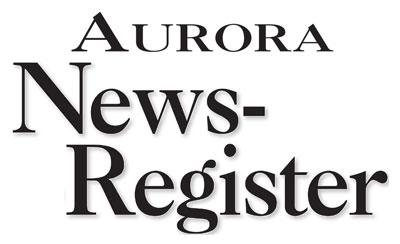■ Three tier system suggested to manage risk, restrictions during COVID-19 era
With the return to school quickly approaching July’s 4R School Board meeting held eventful decisions, a welcome to a new principal and superintendent and an update on what plans could look like in the face of the current coronavirus pandemic.
“First and foremost, I do want to give credit to our administrative staff,” Supt. Jody Phillips began. “I called them in on July 3, which is supposed to be a national holiday, and we sat here for about 4-1/2 hours and really hashed out all the details. So thank you to them for their insights and input in the ever changing goals of getting back into school.”
As they move towards reopening, the district’s biggest goal is less about the ability to open school and more about staying in school, Phillips noted.
“So a lot of what we’ve written as far as an initial plan here is to put precautions into place so that students stay healthy, staff stays healthy, and we can continue with in-person instruction,” he explained. “We’ve taken into account CDC guidelines, the NDE’s ‘Launch Nebraska’ website, the public health departments, our area Central (District) Health Department, NRCSA (Nebraska Rural Community Schools Association) put together a 31-page document outlining different areas and providing recommendations and considerations for reopening.”
With the current designated health measure set to expire at the end of the month, Phillips noted that the beginning to schoo will likely, and hopefully, come with a new reopening phase and with it the adjustment to their current reopening and operations plans. He heavily encouraged board members to mark their calendars for a possible special meeting at the end of the month to revisit said plans closer to the start of the school year under a new DHM.
“One thing I do need to say is this is as of July 13,” Phillips stated. “We don’t know what July 14th or 20th or 31st is going to bring us, but as of now obviously we know the importance to be able to communicate to our families and to our kids and our community.”
With that Phillips dove into the proposed reopening and operations plans for the district. This plan includes a three-tier risk-based operations outline, featuring a green, yellow and red risk level very similar to that found on the Central District Health Department’s (CDHD) coronavirus dashboard.
Green, or low risk, will represent both the low and moderate risk levels on the CDHD’s dial.
“I had a conversation with Teresa (Anderson) from the Central District Health Department on a superintendent call,” he said. “Right now our public health department is at a 1.3 (risk level), which is in the yellow on that COVID risk dial. So we asked what we could do to get to green and their response was, you have to have a vaccine in order to be in green. So, the reality of us being in green is not up to us right now in the event of having that information.”
This brought up the decision by 4R administration and Phillips to use the CDHD’s yellow dial marker (or moderate risk level) as their baseline. Green on Aurora’s risk indicator includes both green and yellow on the CDHD dashboard dial. Yellow for Aurora is orange for the CDHD, and red remains the same at a severe risk level for both the school district and the health district.
Phillips moved into his overview of the proposed different levels of operation for the 4R school district. Green would mean “full district operations with minimal restrictions,” he said.
“As of now, given how our community is right now in cases and where we’re at on that risk dial, we would be able to enter school in green, and be able to begin operations, which is full-school attendance, all kids in session in learning, in-person learning with some restrictions in place.”
Each building will have its own set of practices that pertain to and work with operations in that building. At the elementary level, Phillips noted, classrooms will be immobilized as much as possible.
“So each of those classes are going to be relatively stagnant for the day as far as staying in their classroom,” he said. “So instead of them moving to classrooms, the teachers will move to them as opposed to them going to the teacher.”
Some special classes like art, music and PE might look a little different, however the superintendent assured those in attendance that things like nice weather and utilizing outside space for PE would take place.
“Second thing, putting in the current practice of hand sanitizing every time you enter the room and exit the room,” he said. “We have 165 gallons of sanitizer all for free. I must thank the Ethanol Board for putting that project together and doing that. It’s 80 percent alcohol and it’s strong stuff. We had 300 dispensers ordered. We thought we were really good there and then the company can’t get plastic to make the dispensers now so we’re going even higher tech and using spray bottles, which I think is actually going to work out better, because it’s liquid. It’s not a gel hand sanitizer.”
Handwashing, as well as other regular sanitization practices, will also be followed, especially when classes exit and before new groups of students enter a room. This becomes more visible at the middle school and high school levels.
“As kids come to school we will not be lined up out taking temperatures, looking for symptoms,” Phillips reported. “We’re going to ask our parents that they watch for some of those symptoms as they send their kids to school. And that’s going to be where we have to have a great relationship and partnership with our parents. We don’t have enough thermometers, we don’t have enough staff, and we don’t have enough time to get school started if we were to screen every kid walking through the door.”
Staff members will still watch for students not feeling well within the building, he assured, and students who might be displaying symptoms will be sent to the office in a mask to be checked out. Disposable masks will be available for use within every classroom.
Other parts of the “green” operation stage include regular assigned transportation routes with riders and drivers asked to wear masks due to close proximity within the bus. All extracurricular activities would proceed as scheduled with or without restrictions depending on current DHM or NSAA guidelines. Outside visitors to the school will be asked to wear a mask upon entry.
Social distancing will be practiced and students, desks, tables and more will be spread out as much as possible during the day. Lockers, for the time being, will not be in use, Phillips reported.
“The mask issue is the great debate right now,” Phillips voiced. “Right now in green as we are right now, this plan is written so that students in school do not have masks on. Masks will be made available to staff for them to have throughout the day. We would work out guidelines with our staff as far as when it would be appropriate to have them on and times throughout the day that they can take it off.
“My biggest concern is we have to have our staff,” he told the board. “If we don’t have our staff, we don’t have school, so I want to be able to protect them, keep them healthy and keep them safe.”
Students who wish to wear a mask to school are more than welcome to, he added. Verbiage on whether or not the school recommends or encourages use of masks will be decided at a later date.
The district’s “yellow stage” includes some of the same restrictions as green, with added restrictions to include masks being required for all staff and students at all times except lunch and when not within six feet of others. In this proposed plan all in-town bus routes would also be cancelled, with those buses and drivers being rerouted to help decrease the amount of students on buses covering rural routes (those students on rural routes, out of town, would still receive transportation). Elementary students would move to eat lunches in their classrooms.
The yellow stage is defined on the draft documentation of the opening and operations plan as “moderate risk” with “multiple (two to three risk level on the COVID-19 risk dial) bases confirmed within the community, district, and/or classrooms.”
It is important to note, Phillips said, that just because other towns or counties may have an outbreak of the coronavirus and the Central Health District moves into a higher risk level, this does not mean that the Aurora School District will follow suit. Teresa Anderson, the CDHD and the school board would be consulted before a decision would be made should this be the case.
“Whatever we can do to stay in school at this point,” Phillips said. “If we do get to red, where we have an outbreak of cases, we’re looking at where we were back in March as far as shutting down operations with in-person, full restrictions in place and moving to (remote) instruction. I think that’s the majority when I say we don’t want to be red.”
With red, staff and administration would be allowed into school buildings to work, and all school activities would be postponed -- if not cancelled.
“What I anticipate is we’ll be moving from green, to yellow, to red, (and then back) to green, or whatever that might be,” Phillips said. “We’re not going from green to yellow and staying yellow forever. We might be going back to green in two weeks, or we might be red and then in a week, or two, or three, or a month we go back to yellow and vice versa. It could very well be a continuum as far as we go and how that happens.”
Phillips fielded a few questions and briefly discussed the potential for student quarantine should positive cases arise, before the adjournment of the Monday meeting.
“Naturally whenever that first case hits within our buildings, we’re going to have a little bit of panic and we’re going to have a little bit of concern,” he concluded. “Obviously that is where the plan goes into place.”
In other items, the board:
* heard administrative reports;
* received an update on present 4R construction projects, which concluded that everything is on schedule;
* discussed the CARES Act funding/grant monies allocated for the Aurora Public Schools District. Approximately $117,000 of CARES Act monies were allocated for 4R schools and will be awarded post grant application;
* approved the following updated policies for the 2020-21 school year: No. 2002 (organization of the Board), No. 4003 (drug policy regarding drivers), No. 5016 (student records), No. 5045 (student fees and appendix), No. 6024 (student discipline), No. 6021 (District criteria for selecting evaluators) and No. 6033 (restraint and seclusion of students);
* approved the 2020-21 use contract with Memorial Community Health;
* reapproved Tina Oswald as a local substitute teacher (with renewal of her certificate);
* approved additional language for the 2020-21 student handbooks.
‘One thing I do need to say is this is as of July 13th. We don’t know what July 14th or 20th or 31st is going to bring us, but as of now obviously we know the importance to be able to communicate to our families and to our kids and our community.’
Supt. Jody Phillips





